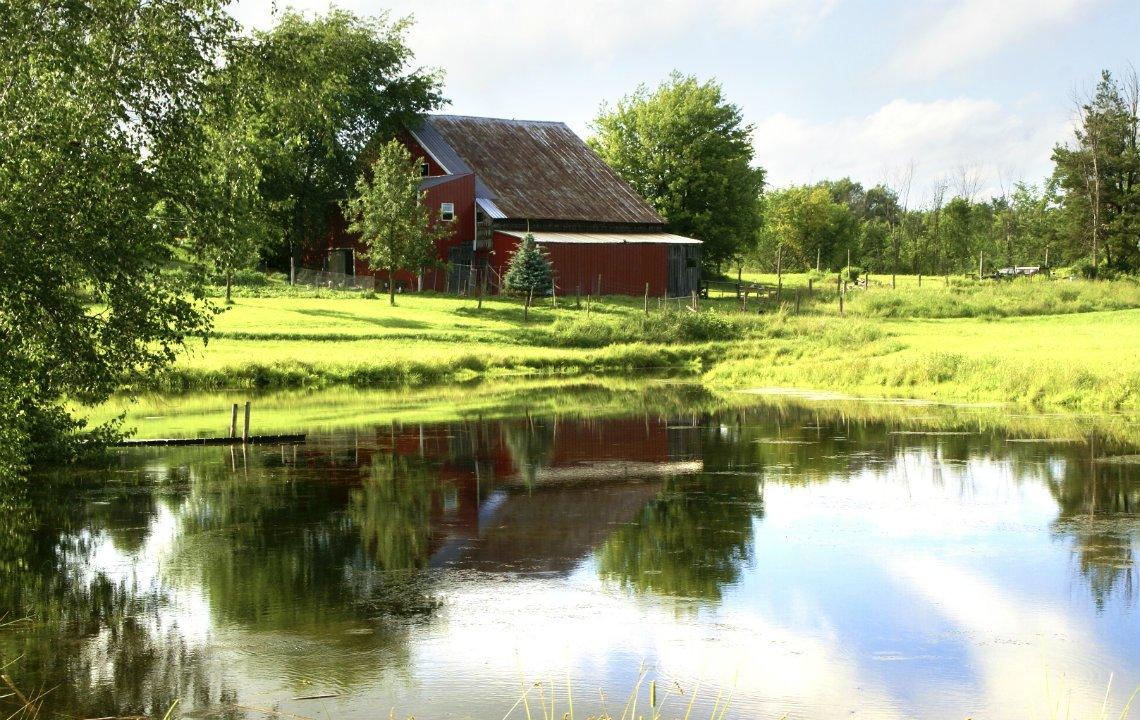
We Just Bought Property With A Pond On It. Now What?
Congratulations on your new home and the half-acre pond that comes with it! Owning a pond can be an exciting and rewarding experience, but it also requires regular maintenance to keep it clean and thriving. In this comprehensive guide, we will walk you through the steps to get started with maintaining and cleaning your pond, ensuring its health and beauty for years to come.
-
Assess the Current State of the Pond: Before diving into maintenance, it's essential to assess the current state of your pond. Take some time to observe the water quality, vegetation, and any visible signs of issues such as excessive algae growth, debris accumulation, or poor water circulation. This assessment will help you identify the specific maintenance tasks required.
-
Establish a Maintenance Routine: Maintaining a pond requires regular attention and care. Establishing a maintenance routine will help you stay on top of the necessary tasks. Here are the key aspects to include in your routine:
a. Skimming and Removal of Debris: Invest in a pond skimmer or net to remove leaves, twigs, and other organic matter that accumulate on the surface. Regular skimming prevents the accumulation of debris, which can lead to water quality issues.
b. Cleaning the Pond Liner: If your pond has a liner, periodically inspect it for damage, and clean it using a soft brush or a pressure washer. Removing accumulated dirt and debris from the liner helps maintain its integrity and prevents potential leaks.
c. Water Circulation and Aeration: Adequate water circulation and aeration are crucial for a healthy pond ecosystem. Consider installing a fountain, waterfall, or air pump to promote oxygen exchange and prevent stagnation. This will also discourage the growth of algae and maintain overall water quality.
d. Managing Algae Growth: Algae is a common issue in ponds. To control excessive algae growth, introduce appropriate aquatic plants that compete with algae for nutrients and provide shade. You may also consider using natural solutions like barley straw or beneficial bacteria that can help balance the ecosystem.
e. Monitoring Water Quality: Regularly test the water quality parameters such as pH, ammonia, nitrate, and dissolved oxygen levels. This information will guide you in identifying any imbalances or potential issues and allow you to take corrective measures promptly.
-
Pond Planting and Maintenance: Aquatic plants play a vital role in maintaining the ecological balance of your pond. Consider the following when selecting and maintaining pond plants:
a. Native Plants: Opt for native plants as they are well-adapted to your local climate and will require less maintenance. They also provide valuable habitat for beneficial organisms and help prevent erosion.
b. Balance Plant Types: Aim for a mix of submerged, floating, and marginal plants. Submerged plants provide oxygen and absorb excess nutrients, while floating plants offer shade and compete with algae. Marginal plants, planted along the edges, provide cover for wildlife and enhance the aesthetics.
c. Pruning and Thinning: Regularly trim and thin out excessive plant growth to maintain a healthy balance.
-
-
Wildlife and Fish Considerations: Ponds are not only beautiful but also provide a habitat for a variety of wildlife and fish. Here are some considerations for maintaining a thriving ecosystem:
a. Fish Care: If your pond contains fish, ensure their well-being by providing appropriate food, monitoring their health, and maintaining suitable water conditions. Avoid overstocking the pond, as it can lead to poor water quality and stress the fish.
b. Wildlife Coexistence: Encourage a diverse range of wildlife by providing nesting sites, such as birdhouses and rock piles, as well as areas of shallow water for amphibians and reptiles. However, be cautious about invasive species that may disrupt the natural balance.
-
Stormwater Management: Ponds can serve as a natural solution for managing stormwater runoff. To optimize their effectiveness:
a. Consider installing a rain garden or bioswale to capture and filter stormwater before it enters the pond. This reduces the load of pollutants and sediment entering the water.
b. Ensure that the pond's inflow and outflow channels are clear of debris, sediment, and vegetation, allowing for efficient water flow during heavy rainfall.
-
Pond Safety: Safety should be a top priority when it comes to owning a pond, especially if you have children or pets. Implement the following measures to ensure a secure environment:
a. Install a sturdy fence or barrier around the pond to prevent accidental falls.
b. Educate children and visitors about the dangers of deep water and the importance of supervision.
c. Consider adding floating safety devices, such as life rings or a reach pole, in case of emergencies.
-
Professional Assistance: If you're unsure about certain aspects of pond maintenance or face persistent issues, it's advisable to seek professional assistance. Pond specialists or landscape professionals with experience in water features can offer valuable insights and guidance tailored to your specific situation.
Conclusion: Maintaining a half-acre pond can be a fulfilling endeavor that enhances the beauty and value of your property. By following a regular maintenance routine, planting appropriate vegetation, managing wildlife, and implementing stormwater management measures, you can ensure a clean, healthy, and visually appealing pond ecosystem. Remember to monitor water quality, address issues promptly, and seek professional help when needed. With proper care, your pond will provide years of enjoyment for you, your family, and the diverse wildlife that call it home.
-

